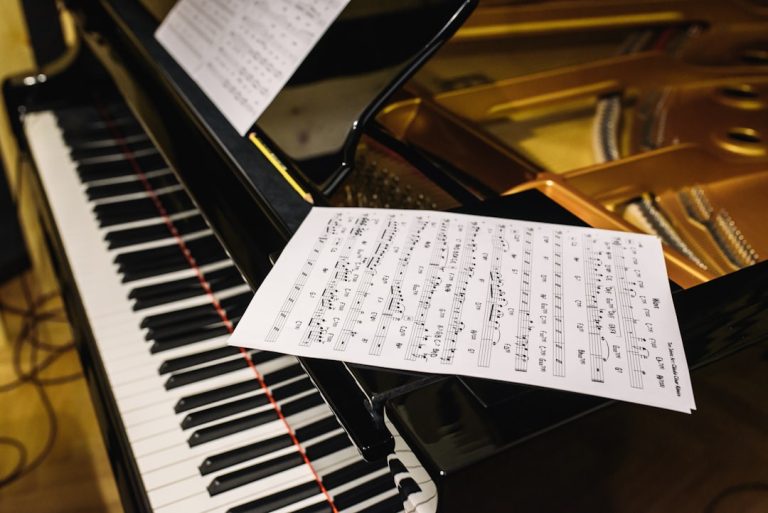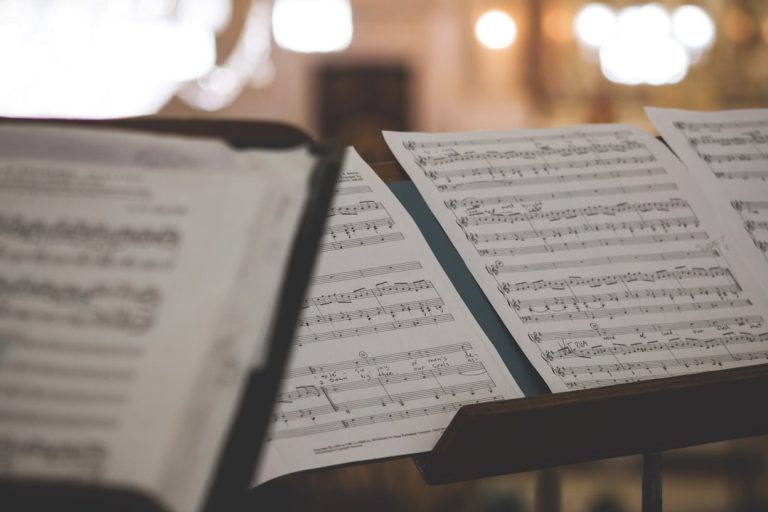
Songwriting is an art form that transcends mere entertainment; it serves as a powerful medium for expression, communication, and connection. Lyrics have the unique ability to encapsulate complex emotions and experiences in a way that resonates deeply with listeners. From the poignant verses of folk ballads to the catchy hooks of pop anthems, the words in a song can evoke memories, inspire change, or provide solace during difficult times.
The impact of lyrics is not just limited to their immediate emotional effect; they can also shape cultural narratives and influence societal attitudes. For instance, Bob Dylan’s “The Times They Are a-Changin'” became an anthem for the civil rights movement, illustrating how lyrics can galvanize social change and reflect the zeitgeist of an era. Moreover, the power of lyrics lies in their universality.
A well-crafted song can speak to the human experience in ways that transcend geographical and cultural boundaries. Consider the global phenomenon of “Despacito” by Luis Fonsi and Daddy Yankee. While the song is primarily in Spanish, its infectious rhythm and relatable themes of love and desire allowed it to resonate with audiences worldwide, leading to unprecedented chart success.
This phenomenon highlights how lyrics can bridge divides, fostering a sense of shared experience among diverse listeners. The emotional weight carried by lyrics often lingers long after the music has faded, making them a vital component of our collective consciousness.
Key Takeaways
- The power of lyrics lies in their ability to evoke emotions and connect with listeners on a personal level.
- Uncovering hidden meanings in song lyrics involves analyzing symbolism and metaphors to gain a deeper understanding of the message.
- Deciphering emotions in songwriting requires an understanding of the songwriter’s personal experiences and how they influence the lyrics.
- Political and social commentary in song lyrics reflects the influence of current events and societal issues on the songwriter’s perspective.
- The evolution of language in songwriting techniques can be traced through the development of different styles and approaches over time.
Uncovering Hidden Meanings: Analyzing Symbolism and Metaphors in Song Lyrics
The richness of song lyrics often lies in their use of symbolism and metaphor, which can add layers of meaning that invite deeper analysis. Many songwriters employ these literary devices to convey complex ideas or emotions that might be difficult to articulate directly. For example, in “Blackbird” by The Beatles, Paul McCartney uses the metaphor of a bird taking flight to symbolize freedom and empowerment.
The imagery evokes a sense of hope and liberation, particularly in the context of the civil rights movement during which the song was released. Such symbolic language allows listeners to interpret the song through their own experiences, creating a personal connection to the music. Additionally, metaphors can serve as a vehicle for social commentary or critique.
In “Fight the Power” by Public Enemy, the lyrics are laden with powerful imagery that critiques systemic racism and oppression. The use of metaphors related to fighting and resistance not only conveys urgency but also inspires action among listeners. This technique is prevalent across various genres, from rock to hip-hop, where artists often employ vivid imagery to challenge societal norms or provoke thought.
By analyzing these symbols and metaphors, listeners can uncover hidden meanings that enrich their understanding of the song and its broader implications.
Deciphering Emotions: Understanding the Role of Personal Experience in Songwriting

Personal experience is often at the heart of songwriting, providing a wellspring of inspiration for artists. Many songwriters draw from their own lives—relationships, struggles, triumphs—to create lyrics that resonate with authenticity. For instance, Taylor Swift is renowned for her confessional songwriting style, where she candidly shares her personal experiences with love and heartbreak.
Songs like “All Too Well” showcase her ability to weave intricate narratives that evoke strong emotions in listeners, allowing them to connect with her story on a personal level. This emotional honesty not only enhances the relatability of her music but also establishes a bond between the artist and her audience. Furthermore, the act of songwriting can serve as a therapeutic outlet for artists grappling with their emotions.
For many musicians, writing lyrics is a way to process feelings that may be difficult to articulate otherwise.
Cash’s rendition imbues the song with a profound sense of vulnerability, reflecting his own struggles with addiction and mortality.
This intersection of personal experience and songwriting creates a powerful emotional resonance that can profoundly impact listeners, often leading them to reflect on their own lives and experiences.
Political and Social Commentary: Examining the Influence of Current Events on Song Lyrics
| Year | Number of Songs with Political and Social Commentary | Topical Issues Addressed |
|---|---|---|
| 2010 | 25 | War, economic inequality, environmental issues |
| 2015 | 40 | Racial injustice, immigration, LGBTQ+ rights |
| 2020 | 60 | COVID-19 pandemic, police brutality, political polarization |
Songwriters have long used their craft as a platform for political and social commentary, responding to current events and societal issues through their lyrics. This tradition can be traced back to folk music during the 1960s, where artists like Joan Baez and Woody Guthrie used their songs to address social injustices and advocate for change. In contemporary music, this trend continues with artists like Kendrick Lamar, whose album “To Pimp a Butterfly” tackles themes of racial inequality and systemic oppression.
Songs like “Alright” have become anthems for movements such as Black Lives Matter, illustrating how lyrics can serve as both a reflection of societal issues and a call to action. Moreover, the immediacy of music allows artists to respond quickly to unfolding events. For instance, after the tragic events of September 11, 2001, many musicians penned songs that addressed themes of loss, resilience, and unity.
Bruce Springsteen’s “The Rising” emerged as a poignant tribute to those affected by the attacks, capturing the collective grief and determination of a nation in mourning. This ability to articulate complex emotions surrounding current events through song underscores the significant role that music plays in shaping public discourse and fostering community solidarity during times of crisis.
The Evolution of Language: Tracing the Development of Songwriting Techniques
The evolution of songwriting techniques reflects broader changes in language and culture over time. Early folk songs often relied on simple structures and repetitive refrains, making them accessible for communal singing. As musical genres evolved, so too did the complexity of lyrics.
The advent of rock ‘n’ roll in the 1950s introduced more sophisticated storytelling techniques, with artists like Chuck Berry crafting narratives that captured the spirit of youth culture. The use of colloquial language and slang became more prevalent during this era, allowing songwriters to connect with audiences on a more personal level. In recent decades, advancements in technology have further transformed songwriting practices.
The rise of digital platforms has democratized music production, enabling aspiring songwriters to experiment with new forms and styles without traditional barriers. Genres like hip-hop have pushed linguistic boundaries by incorporating wordplay, alliteration, and internal rhymes into their lyrics. Artists such as Eminem are celebrated for their intricate rhyme schemes and lyrical dexterity, showcasing how language can be manipulated creatively within songwriting.
This evolution reflects not only changes in musical trends but also shifts in cultural attitudes toward language itself.
Interpreting Ambiguity: Navigating the Grey Areas of Song Lyrics

Interpreting the Classics
For example, Leonard Cohen’s “Hallelujah” is rife with ambiguous imagery that has led to countless interpretations over the years.
Encouraging Critical Thinking
Navigating ambiguity in song lyrics can also enhance the listening experience by encouraging critical thinking and personal reflection. Artists like Fiona Apple often employ abstract language that challenges listeners to decipher their meanings actively.
Fostering Intimacy through Ambiguity
In her song “Paper Bag,” Apple uses metaphorical language to explore themes of disillusionment and self-discovery. The lack of clear answers invites listeners to engage deeply with the music, fostering a sense of intimacy between artist and audience as they grapple with their interpretations together.
The Art of Storytelling: Recognizing Narrative Elements in Songwriting
Storytelling is an integral aspect of songwriting that allows artists to convey narratives through their lyrics. Many songs follow a narrative arc—introducing characters, setting conflicts, and ultimately reaching resolutions—that mirrors traditional storytelling techniques found in literature. For instance, Bruce Springsteen’s “The River” tells the story of youthful dreams contrasted with adult realities, capturing the essence of nostalgia and regret through vivid imagery and character development.
Moreover, storytelling in songwriting often serves as a means for artists to explore universal themes such as love, loss, and redemption. In “Fast Car,” Tracy Chapman narrates the journey of escaping poverty while yearning for a better life—a story that resonates with many who seek hope amidst struggle. By employing narrative elements within their lyrics, songwriters create relatable experiences that invite listeners into their worlds while simultaneously reflecting broader human truths.
The Connection Between Music and Words: Exploring the Symbiotic Relationship in Songwriting
The relationship between music and words is inherently symbiotic; each element enhances the other to create a cohesive artistic expression. The melody sets the emotional tone for the lyrics while providing a framework for rhythm and phrasing. Conversely, lyrics can shape how melodies are perceived—infusing them with meaning that resonates beyond mere sound.
This interplay is evident in countless songs across genres; consider how Adele’s powerful ballads utilize both lyrical depth and vocal delivery to evoke profound emotions. Furthermore, this connection extends beyond individual songs into broader musical movements where language plays a pivotal role in defining genres. In hip-hop culture, for example, lyricism is paramount; artists are often celebrated not just for their beats but for their ability to craft intricate rhymes that convey social commentary or personal narratives.
Similarly, in folk music traditions, storytelling through lyrics is essential for preserving cultural heritage while fostering community connections through shared experiences. In conclusion, songwriting is an intricate art form that encompasses various elements—from personal experience to political commentary—each contributing to its profound impact on listeners. Through careful analysis of symbolism, narrative techniques, and emotional resonance within lyrics, we gain insight into how music shapes our understanding of ourselves and our world.
If you’re interested in delving deeper into the meanings behind song lyrics, you may want to check out the collection of ebooks available at Sersea Ink. These ebooks can provide valuable insights and analysis on the themes and messages conveyed in various songs. Additionally, you may also enjoy exploring the stories section at






